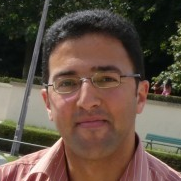Geochemical Exploration for Critical Mineral Resources
A special issue of Minerals (ISSN 2075-163X). This special issue belongs to the section "Mineral Exploration Methods and Applications".
Deadline for manuscript submissions: 30 June 2024 | Viewed by 6895
Special Issue Editors
Interests: geochemical exploration in covered areas; geochemical mapping; geochemical baselines
Interests: mineral exploration; weathering processes; regolith mapping and landscpae evolution
Special Issues, Collections and Topics in MDPI journals
Special Issue Information
Dear Colleagues,
Critical mineral resources are vital for economic growth, improving the quality of life, providing for national defense, and the overall functioning of modern society. Explorative geochemistry is an important tool in prospecting for these critical minerals. It has played a pivotal role in the exploration of a number of critical mineral resources. However, as the degree of exploration continues to increase, geochemical exploration faces increasing challenges. Ore bodies are buried at increasing depths, presenting increasingly complex geological situations and landscapes, and a number of emerging critical minerals are gradually coming to the attention of the prospecting industry. We must further develop geochemical methods that are indicative of these critical mineral resources in particular circumstances.
We aim to publish a Special Issue of the journal Minerals that presents a set of articles on “Geochemical Exploration for Critical Mineral Resources”. The focus of the Special Issue will be on geochemical approaches applied to critical mineral exploration. Our Special Issue will cover a broad range of relevant topics of interest, including but not limited to:
- Dispersion mechanisms of ore-forming and pathfinder elements in the covered or weathered terrains;
- Near-surface geochemical exploration techniques and its application;
- New innovative exploration methods for vectoring toward concealed mineral deposits;
- Mineral exploration using indicator mineral geochemistry;
- Recent advances in hydro- and bio-isotope geochemistry applied to mineral exploration;
- Geochemical exploration for low-carbon energy mineral resources such as lithium, rare earth and uranium.
We look forward to receiving your contributions.
Dr. Bimin Zhang
Dr. Walid Salama
Dr. Zhixuan Han
Guest Editors
Manuscript Submission Information
Manuscripts should be submitted online at www.mdpi.com by registering and logging in to this website. Once you are registered, click here to go to the submission form. Manuscripts can be submitted until the deadline. All submissions that pass pre-check are peer-reviewed. Accepted papers will be published continuously in the journal (as soon as accepted) and will be listed together on the special issue website. Research articles, review articles as well as short communications are invited. For planned papers, a title and short abstract (about 100 words) can be sent to the Editorial Office for announcement on this website.
Submitted manuscripts should not have been published previously, nor be under consideration for publication elsewhere (except conference proceedings papers). All manuscripts are thoroughly refereed through a single-blind peer-review process. A guide for authors and other relevant information for submission of manuscripts is available on the Instructions for Authors page. Minerals is an international peer-reviewed open access monthly journal published by MDPI.
Please visit the Instructions for Authors page before submitting a manuscript. The Article Processing Charge (APC) for publication in this open access journal is 2400 CHF (Swiss Francs). Submitted papers should be well formatted and use good English. Authors may use MDPI's English editing service prior to publication or during author revisions.
Keywords
- geochemical exploration
- exploration methods
- metal migration
- critical mineral resources
- transported cover
- weathered terrains
- concealed ore deposits
- indicator mineral geochemistry
- deep-penetrating geochemistry
Planned Papers
The below list represents only planned manuscripts. Some of these manuscripts have not been received by the Editorial Office yet. Papers submitted to MDPI journals are subject to peer-review.
Affiliation: Key Laboratory of Geochemical Exploration, Institute of Geophysical and 11 Geochemical Exploration, CAGS, Langfang, Hebei, 065000, China
Title: U–Th–Pb geochronology and geochemistry of Monazite in the Suzhou A-type Granite Pluton and its implications for Nb–Ta mineralization
Authors:
2. Authors: Yuexin Lu et al
Affiliation: Key Laboratory of Geochemical Exploration, Institute of Title: Geophysical and 11 Geochemical Exploration, CAGS, Langfang, Hebei, 065000, China Geochemical Prospecting Techniques in Desert Covered Areas, China
3. Authors: Guangyao Shi et al Affiliation: Hebei GEO University, Heibei, 050031,China
Title: Temporal and spatial distribution characteristics of manganese and prospecting prediction in the regions of Yunnan, Guizhou, Guangxi, Hunan in South China
4. Authors: Zhixuan Han et al
Affiliation: Guilin University of Technology, Guangxi, 541004,
CTitle:hina Occurrence and source identification of enriched rare earth elements in the alumina-rich rocks of the Heshan Formation in Shangsi county, Guangxi, China







